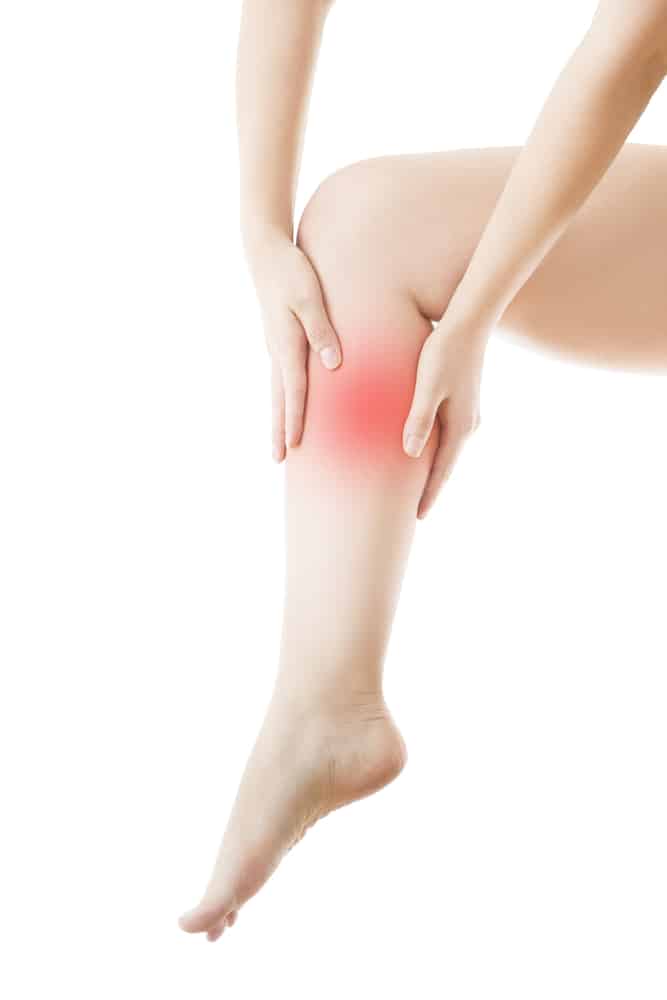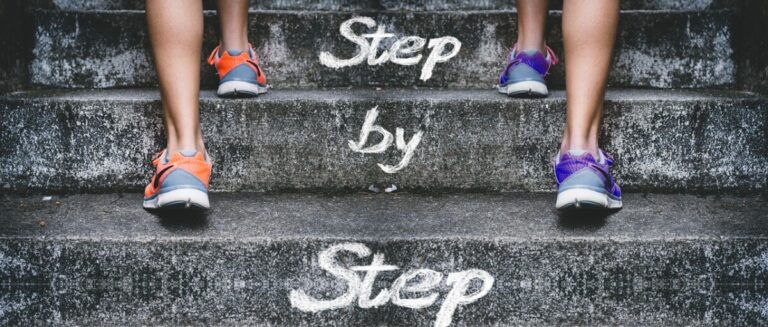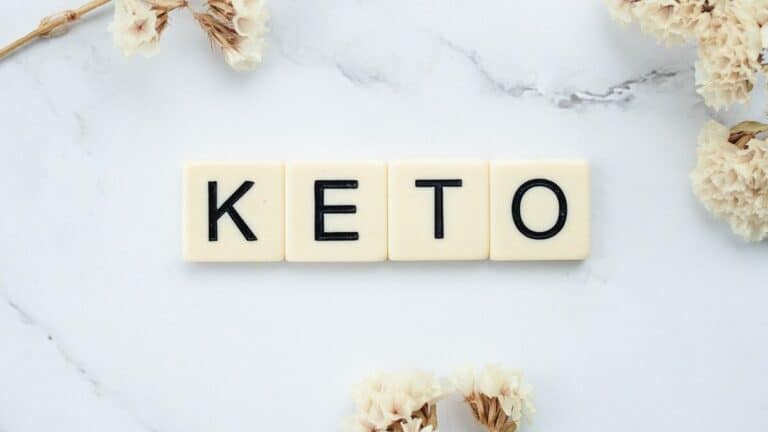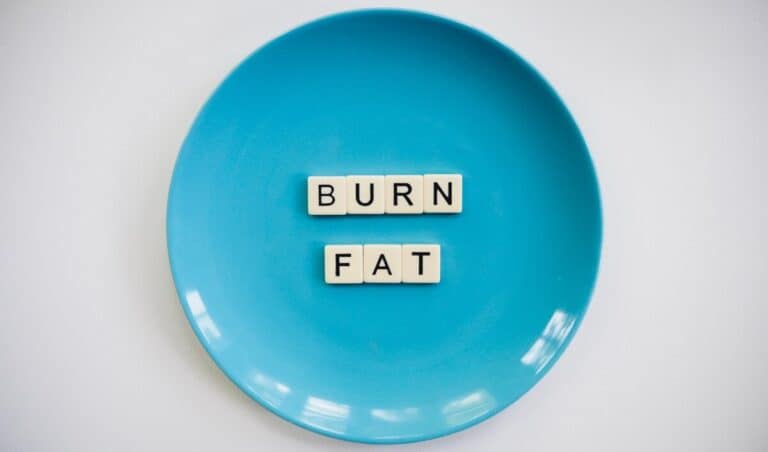Keto leg cramps now what?
Keto leg cramps now what?
Keto leg cramps now what? When beginning the keto diet, leg cramps can be a possibility. Your body uses potassium, magnesium, and sodium to convert your body to ketones. The fuel your body will use while you eat the keto diet.
- Keto leg cramps now what?
- What is a keto leg cramp?
- Reasons you may get keto leg cramps
- What is an electrolyte and how to get them in your diet?
- Choosing the right Sodium
- What foods contain calcium?
- Why do we need calcium in our diet?
- The keto flu how long does it last?
- Night leg cramps
- Tips to help with keto leg cramps.
- 1. What can I do to help Keto's leg cramps?
- 2. Sleep
- What is sleep?
- How to increase REM sleep
- 3. Foods you eat
- 4. Helps if you get a keto leg cramp
- In conclusion
This post contains affiliate links. If you click on a link and make a purchase, I will earn a commission (at no additional cost to you. Please know I only recommend resources and items I believe and highly recommend.

What is a keto leg cramp?
Have you ever woken up in the middle of the night with your calf muscle so tight and the pain so bad you just want to die? This is a keto leg cramp. As your body is transitioning to burning ketones instead of glucose your body is using more electrolytes to help burn the fat. You may experience the joys of keto leg cramps.
Experiencing leg cramps while following a ketogenic diet is a relatively common issue reported by some individuals. There could be a few potential reasons why leg cramps occur during ketosis:
Reasons you may get keto leg cramps
- Electrolyte imbalances: The keto diet, which is low in carbohydrates, can lead to changes in electrolyte levels, particularly sodium, potassium, and magnesium. Electrolytes play a crucial role in muscle function, including preventing muscle cramps. Insufficient intake or imbalances of these electrolytes may contribute to leg cramps. It’s important to ensure you are consuming an adequate amount of these electrolytes through your diet or, if necessary, through supplementation.
- Dehydration: The ketogenic diet often leads to increased urination, which can result in dehydration if fluid intake is not sufficiently increased. Dehydration can affect muscle function and increase the likelihood of experiencing leg cramps. It’s crucial to drink plenty of water and stay properly hydrated while following the keto diet.
- Changes in insulin and glucose levels: The ketogenic diet drastically reduces carbohydrate intake, which can cause changes in insulin and glucose levels. These changes might affect nerve function and contribute to muscle cramps. However, more research is needed to understand the exact relationship between ketosis and leg cramps.
What is an electrolyte and how to get them in your diet?
Electrolytes are minerals that carry an electric charge when dissolved in a liquid, such as water. They are essential for various bodily functions and play a vital role in maintaining proper hydration, nerve function, muscle contractions, pH balance, and other physiological processes. The main electrolytes in the human body are:
- Sodium (Na+): Sodium is crucial for maintaining fluid balance, nerve function, and muscle contractions. It helps regulate blood pressure and plays a role in transmitting electrical signals in the body.
- Potassium (K+): Potassium is important for maintaining proper heart and muscle function. It helps regulate fluid balance, nerve signals, and muscle contractions, including the contraction of the heart muscle.
- Magnesium (Mg2+): Magnesium is involved in hundreds of biochemical reactions in the body. It plays a role in energy production, muscle and nerve function, DNA synthesis, and maintaining a healthy immune system.
- Calcium (Ca2+): Calcium is essential for strong bones and teeth. It is also involved in muscle contractions, nerve function, blood clotting, and the release of certain hormones and enzymes.
- Chloride (Cl-): Chloride works in conjunction with sodium to help maintain proper fluid balance, regulate blood pressure, and maintain pH balance.
These electrolytes are obtained through the foods we eat and are regulated by the kidneys, which help maintain their balance within the body. However, during certain circumstances such as intense physical activity, excessive sweating, vomiting, and diarrhea, or when following a specific diet like the ketogenic diet, electrolyte levels can become imbalanced. In such cases, it may be necessary to replenish electrolytes to support optimal bodily functions.
Foods with magnesium
Several foods are good sources of magnesium. Here are some examples:
- Spinach: Spinach is a leafy green vegetable that is rich in magnesium. It can be enjoyed raw in salads or cooked in various dishes.
- Almonds: Almonds are not only a good source of healthy fats and protein but also contain a decent amount of magnesium. They make for a convenient and nutritious snack.
- Pumpkin seeds: Pumpkin seeds are a tasty and nutritious snack that provides a good amount of magnesium. They can be eaten on their own or sprinkled on salads, yogurt, or smoothies.
- Dark chocolate: Good news for chocolate lovers! Dark chocolate with a high percentage of cocoa contains a decent amount of magnesium. Opt for dark chocolate sugar-free for the most health benefits.
- Avocado: Avocado is a versatile fruit that is not only delicious but also contains various nutrients, including magnesium. Enjoy it in salads, sandwiches, or as a topping on toast.
- Tofu: Tofu, made from soybeans, is a versatile and vegetarian-friendly source of magnesium. It can be used in stir-fries, salads, or blended into smoothies.
Incorporating these magnesium-rich foods into your diet can help ensure you’re getting an adequate intake of this essential mineral. Remember to balance your diet with a variety of nutrient-dense foods for overall health and well-being.
What is sodium good for and where can I find it
Sodium is an essential mineral that plays several important roles in the body. It is primarily known for its role in maintaining fluid balance, nerve function, and muscle contractions. Here are some key functions and sources of sodium:
- Fluid balance: Sodium works in conjunction with other electrolytes to regulate fluid balance in the body. It helps maintain proper hydration levels and supports the function of cells and tissues.
- Nerve function: Sodium is involved in transmitting nerve impulses throughout the body. It helps generate electrical signals that allow nerves to communicate and facilitate the proper functioning of the nervous system.
- Muscle contractions: Sodium is essential for muscle contractions, including the contraction of the heart muscle. It helps transmit signals from the nerves to the muscles, enabling them to contract and relax effectively.
While sodium is important for various bodily functions, it’s worth noting that excessive sodium intake can have negative effects, such as increased blood pressure in some individuals. Therefore, it’s recommended to consume sodium in moderation and balance with other electrolytes.
Choosing the right Sodium
Sodium is naturally present in many foods, and it is also commonly added to processed and packaged foods for flavor and preservation. Here are some food sources of sodium:
- Table salt: sea salt Table salt, also known as sodium chloride, is a common source of sodium. It is added to many dishes during cooking or used as a seasoning at the table. Sea salt is the best, it contains more minerals that will be used when on the keto diet.
- Processed and packaged foods: Processed and packaged foods, such as canned soups, deli meats, condiments, snacks, and fast food, often contain high amounts of sodium. It’s important to read food labels and choose to stay away from packaged foods where possible.
- Natural sources: Some natural foods contain sodium in smaller amounts. These include vegetables like celery, beets, and spinach, as well as dairy products and seafood.
It’s worth noting that a well-balanced diet that includes a variety of whole foods generally provides sufficient sodium for most individuals. However, if you have specific dietary needs or health concerns, it’s recommended to consult with a healthcare professional or registered dietitian for personalized guidance.
What keto foods contain potassium
Several keto-friendly foods are good sources of potassium. Here are some examples:
Avocado
- Avocado: Avocado is a nutrient-dense fruit that is high in healthy fats and contains a good amount of potassium. It’s a versatile food that can be enjoyed on its own, added to salads, or used as a base for dips and spreads.
Spinach
- Spinach: Spinach is a leafy green vegetable that is low in carbs and rich in various nutrients, including potassium. It can be enjoyed in salads, sautéed as a side dish, or added to keto-friendly smoothies.
Salmon
- Salmon: Salmon is a fatty fish that is not only a good source of healthy fats and protein but also provides potassium. It’s a great addition to a ketogenic diet and can be grilled, baked, or pan-seared.
Mushrooms
- Mushrooms: Mushrooms, such as portobello, shiitake, and white button mushrooms, are low in carbs and contain a decent amount of potassium. They can be included in keto-friendly dishes, and omelets, or used as a substitute for higher-carb ingredients.
Swiss chard
- Swiss chard: Swiss chard is a leafy green vegetable that is rich in potassium and low in carbs. It can be sautéed with garlic and olive oil or used as a substitute for wraps or tortillas in keto recipes.
Zucchini
- Zucchini: Zucchini is a versatile vegetable that is low in carbs and contains potassium. It can be spiralized into noodles (“zoodles”), used in casseroles, or grilled as a side dish.
Pumpkin seeds
- Pumpkin seeds: Pumpkin seeds are a nutritious snack that provides a good amount of healthy fats, protein, and potassium. They can be enjoyed on their own or added to salads, soups, or homemade trail mixes.
Brussels sprouts
- Brussels sprouts: Brussels sprouts are a cruciferous vegetable that is low in carbs and contains potassium. They can be roasted, sautéed, or added to keto-friendly stir-fries.
Beef
- Beef: Beef is a protein-rich food that also contains potassium. Opt for lean cuts of beef, such as sirloin or tenderloin, to keep the fat content in check.
Coconut water
- Coconut water: While most fruits are limited on the ketogenic diet due to their higher carb content, some people include small amounts of coconut water for its natural source of potassium. However, it’s essential to consider the carb content and fit it into your daily macros if you choose to consume it.
Incorporating these potassium-rich foods into your ketogenic diet can help ensure you’re getting an adequate intake of this essential mineral. Remember to maintain a balanced diet with a variety of nutrient-dense foods to support overall health and well-being.
Why is it important to get your electrolytes in the foods you eat
It is important to get your electrolytes from the foods you eat because electrolytes play crucial roles in maintaining proper bodily functions. Here are a few reasons why obtaining electrolytes through your diet is important:
- Fluid balance: Electrolytes, such as sodium, potassium, and chloride, help regulate fluid balance within the body. They work together to maintain the right amount of water inside and outside the cells. This balance is essential for proper hydration, cellular function, and overall health.
- Nerve function: Electrolytes are involved in transmitting electrical signals along nerve cells, allowing for proper nerve function and communication. Sodium, potassium, and calcium are particularly important for the proper transmission of nerve impulses, which control various functions in the body.
- Muscle function: Electrolytes are essential for muscle contractions. Calcium, sodium, and potassium play key roles in initiating and regulating muscle contractions, including those of the heart. Adequate electrolyte levels ensure smooth muscle function, preventing issues like muscle cramps and spasms.
- pH balance: Electrolytes help maintain the body’s acid-base balance, also known as pH balance. They assist in regulating the acidity or alkalinity of bodily fluids, which is vital for optimal cellular function and enzyme activity.
- Energy production: Electrolytes are involved in energy production processes within cells. They facilitate the transport of nutrients into cells and the removal of waste products, supporting efficient energy metabolism.
Getting Electrolytes is really important when on the keto diet to avoid keto leg cramps.
While it’s possible to obtain electrolytes from the foods you eat, certain factors such as individual dietary preferences, medical conditions, and lifestyle choices can affect electrolyte balance. In some cases, additional supplementation or focused attention on electrolyte-rich foods may be necessary.
It’s important to note that maintaining a well-rounded and balanced diet that includes a variety of nutrient-dense foods is generally the best way to ensure you’re getting adequate electrolytes. However, for specific needs or situations, consulting with a healthcare professional or registered dietitian can provide personalized guidance on meeting your electrolyte requirements.
What foods contain calcium?
Several foods are good sources of calcium. Here are some examples:
Dairy Products
- Dairy Products: Milk, yogurt, and cheese are excellent sources of calcium. Opt for low-fat or non-fat varieties to keep the saturated fat intake in check.
Leafy Green Vegetables
- Leafy Green Vegetables: Dark, leafy greens like kale, spinach, collard greens, and broccoli are rich in calcium. These vegetables can be included in salads, stir-fries, or cooked as side dishes.
Tofu
- Tofu: Tofu, made from soybeans, is often fortified with calcium and is a good option for those following a plant-based diet. It can be incorporated into stir-fries, curries, or grilled as a meat substitute.
Canned Fish with Bones
- Canned Fish with Bones: Canned fish, such as sardines and salmon, that include the bones are not only a good source of omega-3 fatty acids but also provide calcium. Make sure to choose varieties packed in water or olive oil instead of heavy sauces.
Almonds
- Almonds: Almonds are a nutrient-dense snack that contains calcium along with healthy fats. Enjoy a handful of almonds as a snack or add them to salads, yogurt, or smoothies.
Sesame Seeds
- Sesame Seeds: Sesame seeds are rich in calcium and can be sprinkled on top of salads, and stir-fries, or used to make the tahini sauce.
Fortified plant-based Milk
- Fortified Plant-Based Milk: Many plant-based milks, such as almond milk, soy milk, or oat milk, are fortified with calcium. Check the labels to ensure they provide a substantial amount of calcium.
It’s worth noting that the body’s ability to absorb calcium can be influenced by various factors, including vitamin D levels, overall diet, and other nutrients. Additionally, individual dietary needs may vary, so it’s important to consider your specific requirements and consult with a healthcare professional or registered dietitian for personalized advice.
Why do we need calcium in our diet?
Calcium is an essential mineral that plays several important roles in the body. Here are some reasons why calcium is needed in our diet:
- Bone Health: Calcium is crucial for building and maintaining strong bones and teeth. The majority of the body’s calcium is stored in bones, where it provides structural support and helps to maintain bone density. Consuming adequate calcium throughout life is essential to optimize bone health and reduce the risk of conditions like osteoporosis.
- Muscle Function: Calcium is involved in muscle contraction and relaxation. When a muscle is stimulated, calcium is released, allowing the muscle fibers to contract. Adequate calcium levels are necessary for proper muscle function, including the muscles of the heart.
- Nerve Function: Calcium plays a role in nerve transmission and communication. It helps in the release and reception of neurotransmitters, which are chemical messengers that transmit signals between nerve cells. Maintaining adequate calcium levels is important for normal nerve function and optimal communication between nerve cells.
- Blood Clotting: Calcium is involved in the process of blood clotting, which is essential for wound healing and preventing excessive bleeding. When a blood vessel is damaged, calcium helps form a blood clot to seal the injury.
- Hormone Secretion: Calcium is involved in the secretion and regulation of various hormones and enzymes in the body. It is necessary for the proper functioning of glands, such as the parathyroid glands, which control calcium balance in the body.
- Cell Signaling: Calcium ions act as signaling molecules within cells, playing a role in numerous cellular processes, including cell division, metabolism, and gene expression. Proper calcium levels are necessary for optimal cellular function and overall health.
Calcium needs Vitamin D to be utilized.
It’s important to note that calcium absorption and utilization can be influenced by factors such as vitamin D levels, overall diet, and other nutrients. Additionally, individual calcium needs may vary based on age, gender, and specific health conditions. Consulting with a healthcare professional or registered dietitian can provide personalized guidance on meeting your calcium requirements and maintaining optimal health.
What foods do I find chloride in?
Chloride is an essential mineral that is found in various foods. Here are some examples of foods that contain chloride:
Sea Salt
- Sea salt is the best it contains minerals that our bodies need. : Salt, also known as sodium chloride, is the most common dietary source of chloride. It is added to many foods during cooking or used as a seasoning at the table. However, it’s important to consume salt in moderation as excessive sodium intake can have a negative health effect
Seafood
- Seafood: Seafood, particularly fish and shellfish, can be a good source of chloride. Examples include salmon, cod, shrimp, and mussels. Opt for grilled, baked, or steamed preparations to keep the overall sodium intake in check.
Olives
- Olives: Olives, whether green or black, are a rich source of chloride. They can be enjoyed on their own as a snack or added to salads, pizzas, or Mediterranean-inspired dishes.
Seaweed
- Seaweed: Seaweed, such as nori, kombu, and wakame, is a nutrient-dense food that contains chloride. It is commonly used in Asian cuisine and can be incorporated into soups, salads, or sushi rolls.
Tomatoes
- Tomatoes: Tomatoes are a versatile fruit that contains various nutrients, including chloride. They can be used in salads, sauces, and soups, or enjoyed on their own as a snack.
Celery
- Celery: Celery is a crunchy vegetable that contains chloride. It can be added to salads, and stir-fries, or used as a natural low-calorie snack.
Lettuce
- Lettuce: Lettuce, especially romaine lettuce, contains chloride along with other essential nutrients. It can be used as a base for salads, wraps, or added to sandwiches.
It’s worth noting that chloride is also present in smaller amounts in many other foods, including fruits, vegetables, whole grains, and dairy products, as it is a naturally occurring mineral. Eating a balanced and varied diet that includes a wide range of nutrient-dense foods can help ensure you’re getting adequate chloride and other essential nutrients for overall health.
The keto flu how long does it last?
The duration of the keto flu can vary from person to person. Generally, the keto flu refers to a collection of symptoms that some people experience when transitioning to a ketogenic diet. These symptoms can occur during the initial stages of the diet as the body adapts to using fat as its primary fuel source instead of carbohydrates.
The keto flu is often temporary and typically lasts for about a week or two, but it can vary in duration and intensity. Some individuals may experience milder symptoms that last only a few days, while others may experience more pronounced symptoms that persist for a couple of weeks.
During this period, you may experience symptoms such as fatigue, headaches, brain fog, irritability, nausea, dizziness, and muscle cramps. These symptoms are thought to arise due to changes in electrolyte balance, dehydration, and the body’s adjustment to using ketones as an energy source.
To alleviate the symptoms of leg cramps, the keto flu and support your transition into ketosis, it’s important to stay hydrated, replenish electrolytes (such as sodium, potassium, and magnesium), ensure adequate sleep, and maintain a well-balanced diet. Consuming foods rich in electrolytes or using electrolyte supplements can help minimize the symptoms and promote overall well-being during this transition period.
It’s important to note that not everyone experiences the keto flu, and some individuals may transition to a ketogenic diet without significant symptoms. However, if you have concerns about the duration or severity of your symptoms, it’s always a good idea to consult with a healthcare professional or a registered dietitian for personalized guidance.

Night leg cramps
Leg cramps that occur during sleep, also known as nocturnal leg cramps, can be quite uncomfortable and disruptive. There are several potential reasons why leg cramps may happen while you’re sleeping:
- Muscle fatigue or overexertion: If you engage in physical activity or exercise during the day that puts excessive strain on your leg muscles, you may become fatigued. This fatigue can contribute to leg cramps during sleep.
- Dehydration: Insufficient hydration can lead to electrolyte imbalances and muscle cramps. When you’re dehydrated, your body may not have enough fluids to support proper muscle function, increasing the likelihood of leg cramps.
- Electrolyte imbalances: Imbalances in electrolytes like potassium, magnesium, and calcium can disrupt normal muscle function and trigger leg cramps. These imbalances can be caused by various factors, such as poor diet, certain medications, or underlying health conditions.
- Nerve compression: Nerves that run through your legs can be compressed or irritated due to factors like poor posture, sitting or standing for prolonged periods, or certain medical conditions. This compression can lead to muscle cramps, including during sleep.
- Medications: Some medications, such as diuretics, statins, and certain asthma medications, may increase the risk of leg cramps as a side effect. If you suspect your medications may be contributing to your leg cramps, consult with your healthcare provider for possible alternatives or adjustments.
- Pregnancy: Pregnant women often experience leg cramps during sleep, especially in the later stages of pregnancy. Hormonal changes, changes in circulation, and increased pressure on leg muscles due to weight gain can all contribute to these cramps.
- Restless legs syndrome (RLS): RLS is a condition characterized by an uncomfortable sensation in the legs, often accompanied by an irresistible urge to move them. These sensations typically worsen at rest or during sleep, leading to leg cramps.
Tips to help with keto leg cramps.
- Stay hydrated: Drink an adequate amount of water throughout the day to prevent dehydration.
- Ensure sufficient electrolyte intake: Consume foods rich in electrolytes such as leafy greens, nuts, avocados, and seeds. You may also consider supplementing with electrolyte-rich drinks or tablets.
- Increase magnesium intake: Magnesium plays a vital role in muscle function. Include magnesium-rich foods in your diet, such as spinach, almonds, and dark chocolate. If needed, you can also consider magnesium supplements, but it’s best to consult with a healthcare professional before starting any new supplements.
- Gradually transition into ketosis: Instead of abruptly starting the ketogenic diet, consider gradually reducing your carbohydrate intake over a few weeks. This approach may help your body adjust more smoothly and minimize the chances of experiencing leg cramps.
Night leg cramps are caused by neuro-muscular imbalance and lack of the right nutrients. Mainly :
Potassium 4700mg
Magnesium 420mg
Sodium 1,500mg
Calcium 1,000mg
This is the amount you should be getting each day. Through your food and supplements.
1. What can I do to help Keto’s leg cramps?
Stretching out the calf muscle can help. It will hurt, but it will help the contraction of the muscle.
Hot and cold pads -either can help, just your preference
Drinking water as you need it. Adding sea salt to your drinking water can help you avoid leg cramps But drinking too much water can flush out the minerals that hold the water in, creating an imbalance in your system. Adding electrolytes is very important when on the keto diet.
Some people drink pickle juice.
But the most important is the electrolytes.
You can find an assorted variety of electrolytes. Most come in assorted flavors. This also will help you with your water intake.

2. Sleep
Focusing on your sleep patterns will also help. As you drift off to sleep, the brain naturally produces melatonin, which is found in the pineal gland of the brain. This can also be found in a supplement form to help in the process of sleep.
You must find a sleep routine that will work for you. By turning electronics off 30 minutes before bed. To let your brain relax.

What is sleep?
The average person needs about 7-9 hours of sleep a night. The normal sleep cycle goes through 4-5 90-minute cycles. Deep sleep is also known as slow-wave sleep. It is when your body repairs and restores systems from your brain to your muscles.
The earlier cycles tend to be a deep sleep. While the later cycles have a higher chance of rem
The ideal sleep cycle is 90 minutes of deep sleep and rem per night
If you wake up groggy because of being awake frequently in the night, it is usually because you are not going into a deep; sleep..
Some signs of lack of deep sleep are :
*irritability
*daytime fatigue
*not being able to focus
*Short temper
*And being hungry so you are grazing which you don’t want to do on keto.
How to increase REM sleep
Rapid eye movement is very important to our emotional health and learning.
Rem sleep phases occur every 90-120 minutes. Your first rem cycle begins about 60-90 minutes after you fall asleep. It will last roughly 90 minutes
However, as the night progresses you will spend more time in rem sleep with each new cycle with the longest occurring in the second half of the night.
The ideal amount to get is 90 minutes of rem sleep per night.
4 steps to focusing on sleep
1 Correct nutrient is taken prior to sleep. I find that taking melatonin, potassium, magnesium, and calcium, before I go to sleep helps me relax.
2 Re-establish circadian rhythm to prevent frequent waking throughout the night.
3 Relaxing muscles and the nervous system before bed.
4. Use a sleep mask.

Sleep tips
To get great sleep, you must lower your body temperature. a cool temperature of around 65 tells the body it is time to go to sleep. Our core is at its lowest when we sleep. In addition, it also lets our bodies stay asleep. Have you ever awakened and you were too hot maybe the night sweats have attacked you again.
It is time to take action by cracking a window open, turning a fan on, wearing loose clothing, and leaving a limb or two out to regulate your body temperature.
SLEEPING AND LOSING WEIGHT
There have been many studies on this subject. They show that there is a relationship between less sleep and weight gain.
Less than 6 hours of sleep and our bodies won’t lose the weight we want. There is a balance between too much sleep also 9- 10 hours also shows the obesity /diabetes connection.
So how do we find a balance between sleep and being awake? I am also working on this problem. Five years ago when I was in a deep depression, I only slept 4 hours a night. I was hooked on Korean Dramas and junk food. I spent many hours glued to my tablet and watching and eating way into the night.
Changing Sleep Habits
I finally had to change my habits. When I was diagnosed with blood clots in my lungs very sick. I was told it was the combination of sitting too long and not moving and a bad fall I had the month before. So sleep then became my friend again.
I have always had a hard time sleeping I still struggle with it but there are a few things I have found to help.
- Turn off your electronics 1 hour before you sleep.
- A cool room.
- A fan to cool you down and it helps me with white noise.
- A warm shower to calm down and relax my muscles.
- Listen to music or a book that you have heard before. (my brain will race and think of all the things that I need to do. )
- Write down a list of your day so your brain can relax and sleep
- I take my potassium and magnesium, to help my body relax.
- Use a sleep mask
- Meditation
What are some ways you can find so you can get your sleep?
3. Foods you eat
And as always our diet has a lot to do with the keto leg cramps. If we get the nutrients our bodies need we can lessen the chance of a keto leg cramp.
Eat nonstarchy foods such as Kale, arugula, broccoli, lettuce, and asparagus. Some people can't eat large quantities of veggies, eat only to your tolerance.

Use more sea salt. This salt is great for leg cramps, either on your food for flavor or in your water.
MTC oil may also help with the keto transition. Be careful may cause gastric distress, add slowly.
4. Helps if you get a keto leg cramp
Stretch it out.
This will hurt but it will relax your muscles and give you relief.

Exercise - our bodies need to move. Sitting too much is hard on our bodies. Get up and move. It is good for you.
Heat - use a warm towel or a heating pad to relax your muscles.

In conclusion
Keto's leg cramps hurt. However, there are many solutions to help lessen the chance of getting them.
Nutrition, water, electrolytes, and just plain exercise. Keto is a great way to lose weight feel better and look amazing.
This is for informational education only and is not a substitute for professional medical advice, diagnosis, or treatment. always seek the advice of your physician or other qualified health providers with any questions you may have regarding a medical condition before undertaking any diet, supplement, fitness, or other health programs.









